
Mt. Banahaw de Lucban—The terrestrial team spent 10 days at Mt. Banahaw de Lucban in SE Luzon at the top of the Bicol Peninsula. Mt. Banahaw is an old volcano that is covered with forest from 700 to nearly 1800m. The team previously accessed the top of Mt. Makiling and the summit of Mt. Banahaw gives important comparative information on plant and animal distribution on mountain islands.
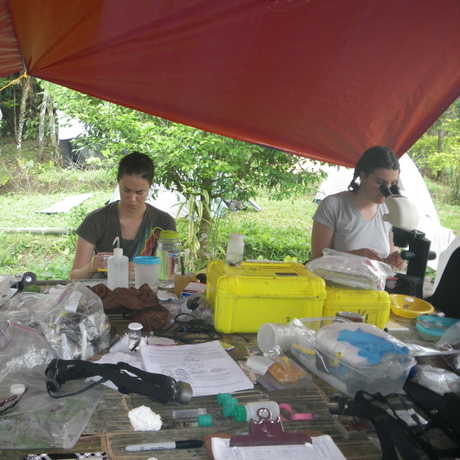
Base Camp at Mt. Banahaw de Lucban
The base camp is at a forestry station at about 750 meters, where we camped for 6 days. There we had a table covered with a tarp and access to lower elevation forest for our traps and collecting. Food was cooked at the station and, as always in the Philippines, was very good. Here some of our team prepare collected specimens.
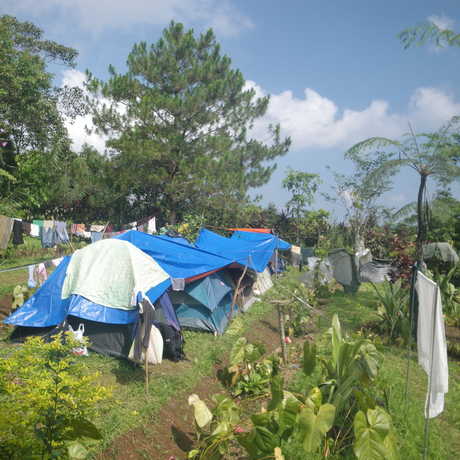
After the rain: Base Camp at Mt. Banahaw de Lucban
On the third day we had several hours of torrential rain. On the sunny morning after, the base camp tried to dry out.
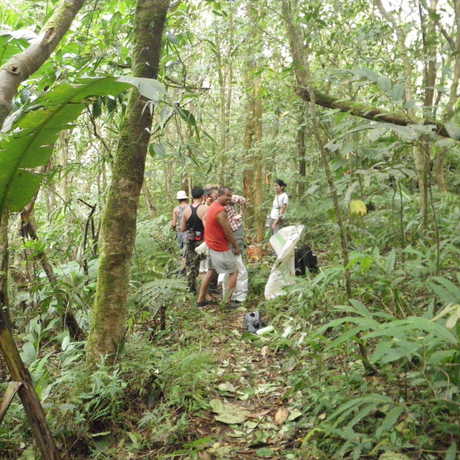
800 meter forest at Mt. Banahaw de Lucban
The low elevation forest here is very rich in species, and also in things to bite, sting, and slash. Mosquitos, land leeches, and stinging trap jaw ants are common, and plants include Pandanus with saw-edged leaves and spiny, climbing rattan palms that grab you with thorns.
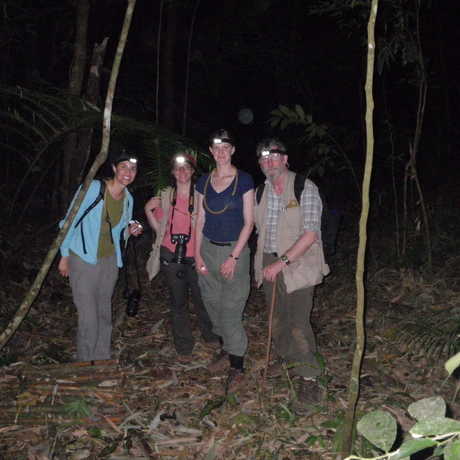
Night collecting at Mt. Banahaw de Lucban
Collecting arthropods requires lots of work, and lots of tricks. Many are only active at night, especially web-building spiders. The arachnology team: Vanessa, Natalia, Hannah and me, are collecting at night in lowland forest. We have the “stenlites” favored by cavers, which can light up the forest.
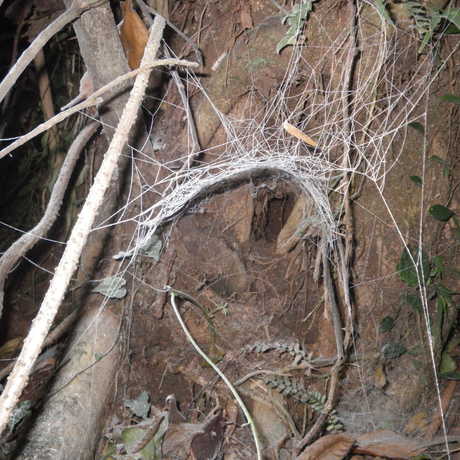
Psechrus, Mt. Banahaw de Lucban
The huge (0.5 to 1m diameter) sheet and funnel webs of Psechrus are common on tree trunks in lowland forest at Mt. Banahaw de Lucban. Psechridae are endemic to Asia and combine a strange combination of characters: their feet are modified for running on smooth surfaces yet they hang beneath their sheet webs. Psechrids are related to the worldwide wolf spiders. The web was photographed at night, after being dusted with corn starch.

Cyrtarachnine spider, Mt. Banahaw de Lucban
The cyrtarachnines are orb builders (Araneidae) with webs higher modified by evolution for catching moths. The web is reduced, sometimes to a single line, but incorporates large droplets of ultra-sticky glue. Moths easily escape from most spiders webs: their scales come off the moth and stick to the glue, allowing the moth to escape: a little balder, but safe. The ultra-sticky glue of cyrtarachinines defeats the moth’s defense by removing most of the scales and holding the moth fast. This unidentified species from low forest makes a simple web with few vertical lines. Many cyrtaracinines produce an airborn chemical that mimics the sex pheromone (like perfume) of common moths: maybe this one does too. The web was photographed at night, after being dusted with corn starch.

Extraction methods, malaise trap
One of the tricks that we use to catch flying insects is the flight trap, or malaise trap. This is basically a fine-mesh tent that intercepts and funnels flying insects into a capture bottle at the top. Here we are setting a flight trap in the forest.

Extraction methods, winkler
The soil and leaf litter harbor a diverse and interesting but hard to access fauna of arthropods. Another of the tricks that we use to arthropods is the winkler funnel. Leaf litter from the forest floor is sifted, concentrated and placed in a bag inside this cloth funnel. Small arthropods fall into the capture cup at the bottom. Here Vanessa is hanging winkler funnels at Banahaw base camp.
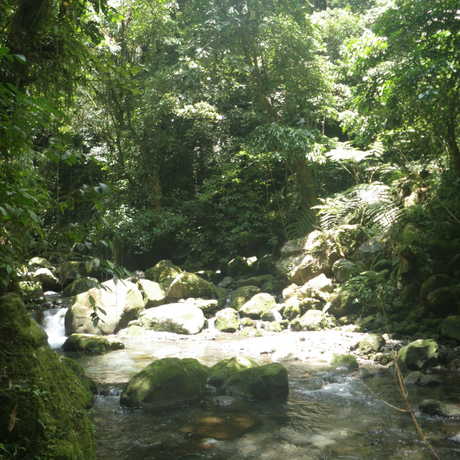
TaiTai River
Mt. Banahaw de Lucban is very wet, with more than 280 days of rain per year, and is the essential watershed for the surrounding towns and farms. But, like most volcanic mountains in the tropics, the mountain is very porous and there is little surface water. Rivers and permanent streams are few. The Taitai River is one of these few. This beautiful river is just a few hours’ walk from base camp, and provided some welcome relief from the steamy heat as well as some unique collecting.
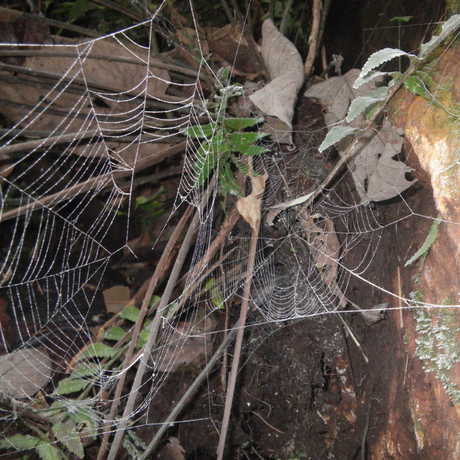
Theridiosomatidae
Theridiosomatids are micro-orb weaving spiders and are mostly less than 3mm in length. They make modified, often asymmetrical orb webs and actively manage these webs by pulling and jerking the lines with their short, powerful legs. It has been said that to collect theridiosomatids your feet must be wet. This was the case: I photographed these on the cliffs along the Taitai River near Mt. Banahaw de Lucban

Banahaw summit
Tropical mountains are like islands, harboring a cool-adapted flora and fauna that is typically very different from that of the surrounding hot lowlands but may be similar to other mountaintops far away. Most of the early part of my career was spent studying the spiders of mountain islands in Africa, and my discoveries suggest that for spiders Africa’s mountain islands are very old, with their last connections severed long before the Pleistocene, i.e., more than 5 million years ago. Are Philippine mountain islands equally old, and unique? The summit of Mt. Banahaw de Lucban is at nearly 1800m, more than 1000m above the base camp. To study it we must go there, which means hiking. For me this meant 5 hours of steep, hard climbing, the last 2 hours in pouring rain. Here Orly and Lando make steady upward progress in the rain and mud.
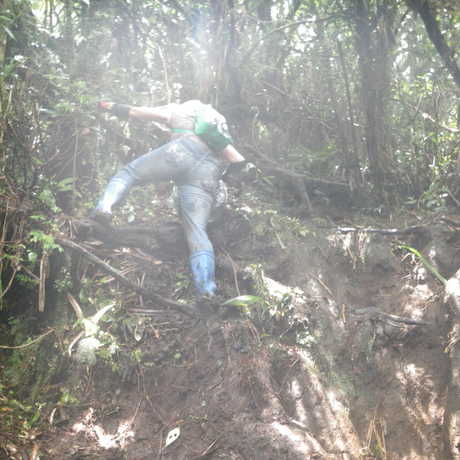
One of the steeper parts
Like most mountains trails in tropical countries, the Banahaw trail has no switchbacks. It is just up, up, up. Roots and trees provide useful handholds. Here is one of the steeper parts of the summit trail. At age 60 this is really hard work for me, but the prospect of finding new spiders species at the top makes it all worthwhile.
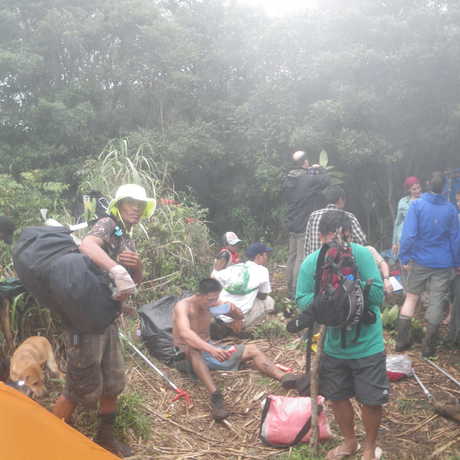
Arrival at Banahaw summit
The summit of Mt. Banahaw de Lucban is at nearly 1800m. Entomologists, porters, Botanists, a cook, cook’s helper, and guides all arrived after a rainy hike from the lowlands.
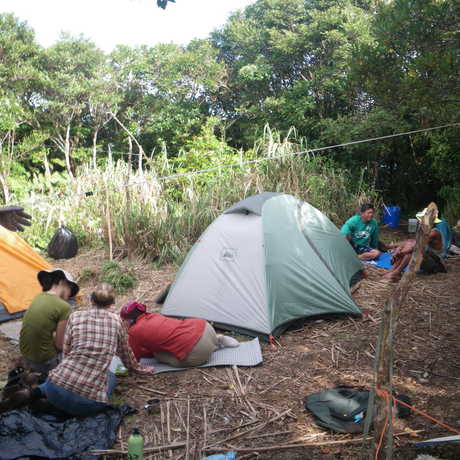
Camp at Banahaw summit
We settled in to spend three days and nights at the summit. The weather at the summit is a dramatic change from the lowlands. With occasional cloud and fog, the weather at the peak of Mt. Banahaw de Lucban is much like San Francisco.
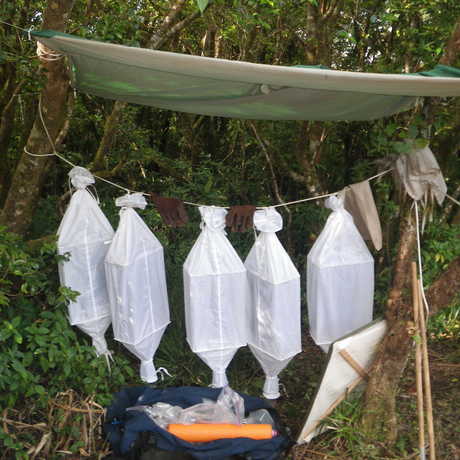
Collecting at the summit
We did the standard array of entomological collecting methods at the summit: hand collecting day and night, yellow pan traps, pitfalls, a flight trap, a lighted sheet at night, and sifted leaf litter. Here are three winklers filled with concentrated leaf litter.
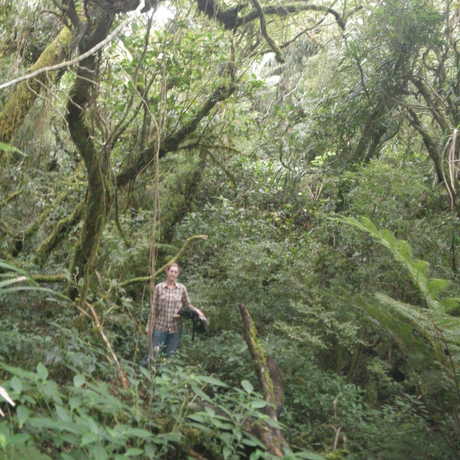
Forest at the peak
The forest at 1800m differs from that of the lowlands. For CAS people from San Francisco it is very comfortable: cool with occasional fog, no land leeches, no mosquitoes, very few ants (we caught the rare ones that we found), and high abundance but low species richness of spiders. The trees here are covered with climbers, mosses and epiphytes.
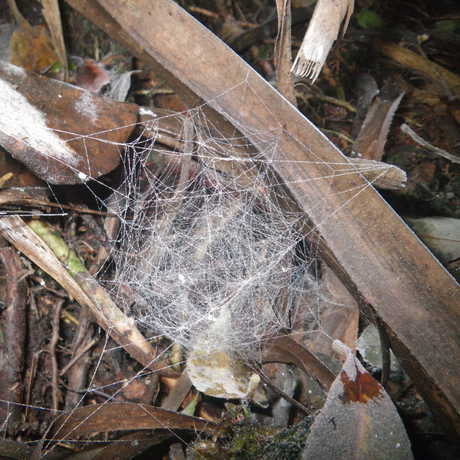
Micro-orb builder